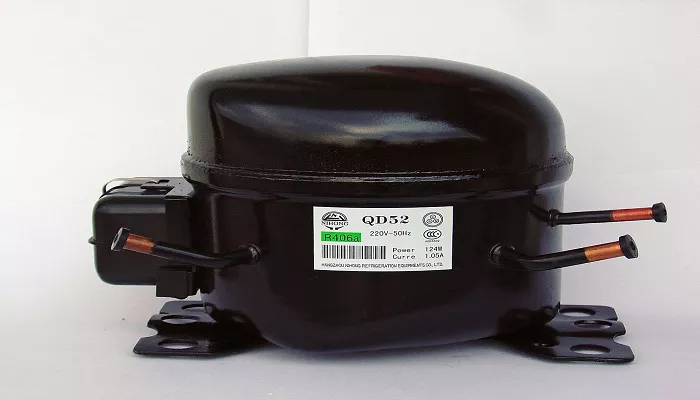The compressor is the heart of a refrigerator, playing a crucial role in the refrigeration cycle. Without it, the refrigerator cannot maintain the low temperatures required for food preservation. This article provides a detailed, professional explanation of why compressors are essential in refrigeration systems, their working principles, types, and their impact on efficiency and performance.
Basic Refrigeration Cycle Overview
Compressor:Compresses refrigerant gas, increasing its pressure and temperature.
Condenser:Releases heat from the high-pressure refrigerant, turning it into a liquid.
Expansion Valve:Reduces refrigerant pressure, causing it to cool rapidly.
Evaporator:Absorbs heat from the refrigerator’s interior, cooling it down.
The refrigerant circulates continuously through these components, transferring heat from inside the refrigerator to the outside environment.
Why is the Compressor Necessary?
Increasing Refrigerant Pressure & Temperature
- The refrigerant enters the compressor as a low-pressure, low-temperature gas.
- The compressor squeezes the gas, increasing its pressure and temperature.
- This high-pressure gas is necessary for efficient heat dissipation in the condenser.
Maintaining Continuous Refrigerant Flow
- The compressor acts as a pump, ensuring refrigerant circulates through the system.
- Without compression, the refrigerant would not flow effectively, and cooling would stop.
Enabling Heat Exchange
- By compressing the refrigerant, the compressor ensures that heat absorbed from the refrigerator’s interior is released outside via the condenser.
- This heat transfer is essential for maintaining a cold interior.
How the Compressor Works in Detail
Suction Phase
- The compressor draws in low-pressure refrigerant vapor from the evaporator.
- This vapor is at a temperature slightly above the refrigerator’s internal temperature.
Compression Phase
- The compressor’s piston (in reciprocating types) or rotating mechanism (in rotary types) reduces the gas volume.
- As the gas is compressed, its pressure and temperature rise significantly.
Discharge Phase
- The high-pressure, high-temperature gas is pushed into the condenser.
- Here, the refrigerant releases heat to the surroundings and condenses into a liquid.
Inverter vs. Non-Inverter Compressors
Non-Inverter Compressors: Run at fixed speed, turning on/off to maintain temperature. Less efficient, higher wear.
Inverter Compressors: Adjust speed based on cooling demand. More energy-efficient, quieter, longer lifespan.
Energy Efficiency & Compressor Performance
Factors Affecting Compressor Efficiency
Refrigerant Type:Modern refrigerants (R600a) improve efficiency.
Compressor Design:Inverter compressors save 20-30% more energy than fixed-speed types.
Heat Dissipation:A well-maintained condenser improves compressor performance.
SEER and EER Ratings
SEER (Seasonal Energy Efficiency Ratio):Measures cooling efficiency over a season.
EER (Energy Efficiency Ratio):Measures efficiency at peak conditions.
Common Compressor Problems and Solutions
Overheating
Causes: Poor ventilation, dirty condenser coils, low refrigerant.
Solution: Clean coils, ensure proper airflow, check refrigerant levels.
Electrical Failures
Causes: Burnt wiring, faulty start relay, capacitor issues.
Solution: Replace damaged electrical components.
Refrigerant Leaks
Causes: Corrosion, poor seals.
Solution: Locate and repair leaks, recharge refrigerant.
Mechanical Wear
Causes: Long-term friction, lack of lubrication.
Solution: Regular maintenance; replace worn-out parts.
Innovations in Compressor Technology
Variable-Speed Compressors
Adjust cooling capacity dynamically, improving efficiency.
Oil-Free Compressors
Use magnetic bearings, reducing maintenance needs.
Smart Compressors
IoT-enabled compressors optimize cooling based on usage patterns.
Conclusion
The compressor is the most critical component in a refrigerator, ensuring proper refrigerant circulation, heat exchange, and cooling efficiency. Different compressor types offer varying levels of performance, noise, and energy consumption. Advances in technology, such as inverter and smart compressors, continue to improve refrigeration systems. Proper maintenance and understanding of compressor functions help extend the lifespan of refrigerators while optimizing energy use.

